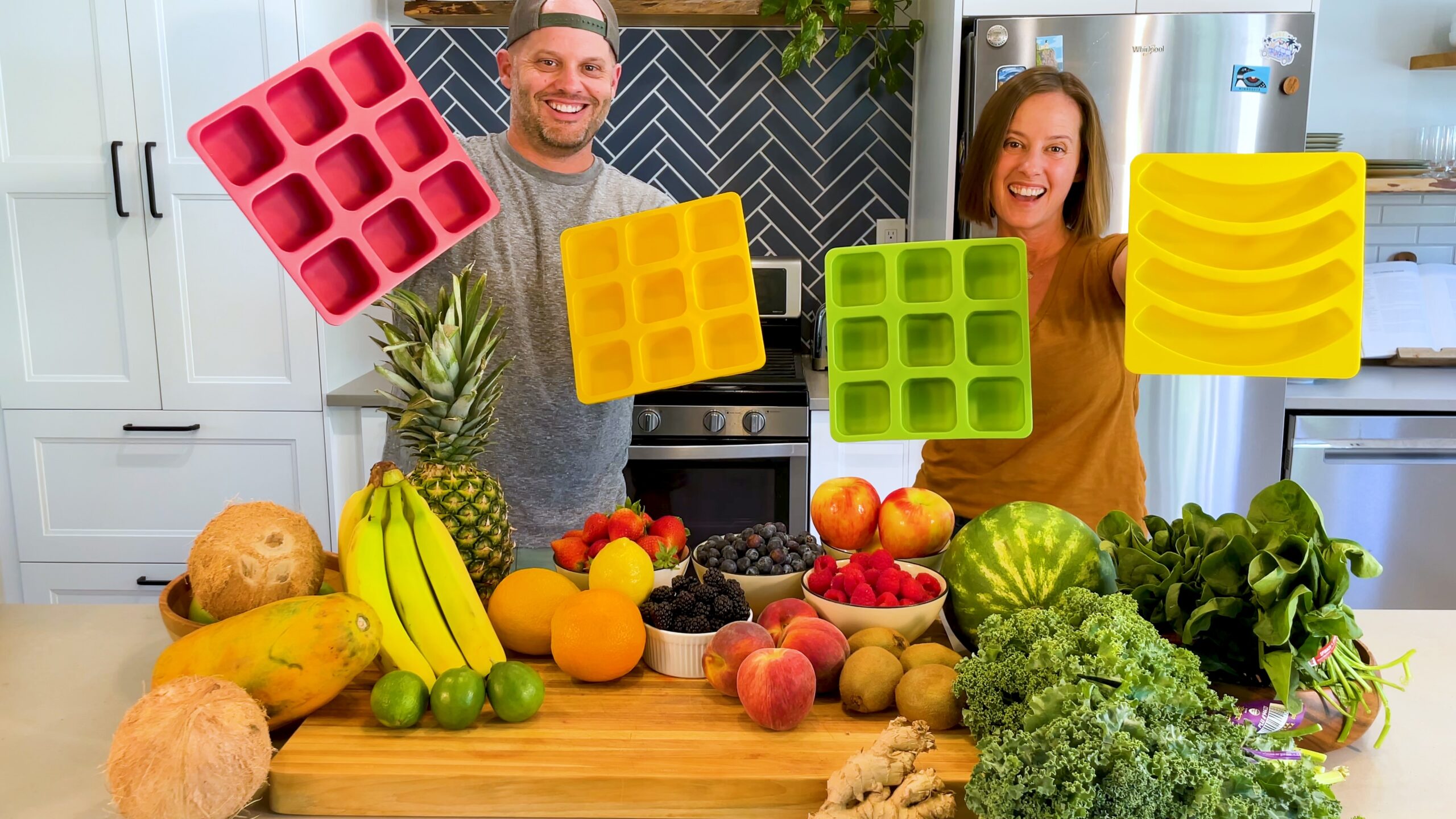For many health-conscious consumers, smoothie prep is a daily ritual, but it can also be a messy, time-consuming hassle. Ross Nelson, founder of Smootheeze, knows this pain all too well. What began as a casual kitchen frustration over clumpy, frozen bananas sparked the creation of a product — and a business — aimed at making smoothie-making easier and less wasteful.
“My wife, Tess, expressed her frustration at dealing with a frozen block of bananas on multiple occasions,” Nelson told Small Business Xchange. “I said there must be a product out there made just for freezing bananas. But I couldn’t find anything after a search online, and the idea popped into my head that we could make it.”
Their journey, from DIY prototyping to giving back through local nonprofit partnerships, shows what’s possible when a product solves a small, specific problem.
“Some of the best products out there aren’t flashy — they just quietly make life easier,” Nelson said. “If your idea takes care of an everyday annoyance or smooths out someone’s routine, there’s probably a bigger audience for it than you realize.”
Small Business Xchange spoke with Nelson to learn more about:
- The challenges of first-time product development and manufacturing;
- Choosing Kickstarter over traditional funding;
- How Smootheeze carved out a voice in the kitchen space; and
- Why impact — not just scale — drives every decision.
PRODUCT DEVELOPMENT
Small Business Xchange (SBX): How did you go from idea to physical product? What were the biggest surprises in designing a kitchen product from scratch?
Ross Nelson: After that initial lightbulb moment, it was a bit of a slow burn before we dove all in. Tess and I both had full-time jobs but would discuss product details and brainstorm what the brand could become while walking our dogs around the neighborhood. About six months later I sold my stake in a marketing agency and decided to devote all of my time to making Smootheeze a reality.
In my marketing career, our agency worked with a lot of manufacturing companies, so I reached out to a few people for guidance on how to get started. I researched a handful of product development companies but ultimately decided to work with an independent design engineer to develop the prototypes.
Our product is very simple, so it wasn’t technically challenging, but it did require a lot of testing to get the functionality just right while meeting some key requirements for mass production.
SBX: As someone who learned manufacturing on the fly, what advice would you give to other founders diving into product development for the first time?
Nelson: I had to quickly get over a bit of fear and apprehension about being a complete novice and looking uninformed when talking to manufacturers. It helped to be up-front and acknowledge that I was completely new to this and was looking for guidance. Some manufacturers weren’t really interested in taking the time to figure it out with me, but each conversation provided more knowledge and empowered me to ask the right questions next time.
Even when I thought I found the right manufacturing partner, there were a couple of key moments where I had to trust my instincts and question how things were proceeding because it didn’t seem like I’d end up with the kind of quality product that I envisioned. I ultimately sought out a second opinion and went with a new manufacturer who could provide better support. So it’s important to ask a lot of questions and advocate for what you think is best even if you don’t have that “expert” experience.
SBX: Were there any prototypes that completely failed or that your customers helped improve?
Nelson: It was a fun process to start with measuring bananas and sketching out the product on paper. We 3D printed the first prototype and could quickly see we had a ways to go to get the sizing right.
The trays started out way too big, which would have been impractical to fit in a freezer. Then we overcorrected and made them too small. It was kind of funny to be standing in the grocery store holding up different bananas gauging the various sizes to come up with a design that would accommodate the average banana. We then got the size right after, but went through a few more iterations to refine the appearance.
The biggest fail so to speak was perfecting the lid so it snapped securely into place. The design engineer got the product 90% of the way there, but it was the manufacturer who was able to quickly refine the design to improve the lid and get it ready for mass production.
FUNDING
SBX: You launched on Kickstarter. Why crowdfunding instead of traditional funding?
Nelson: Launching a product through crowdfunding is the best way to validate an idea and find the market fit before manufacturing a single unit. All you need is a functional prototype to launch on Kickstarter and collect preorders.
So you have a lot more runway to develop the product idea, start advertising to build a list of interested customers versus mass producing the product first and then trying to sell it. You can take your time to get feedback from your target market and potentially refine the product.
With Kickstarter, you can connect with a community that is interested in being the early adopters who like to support new businesses. The ultimate benefit is that you get the money up front to fund your first production order. So it’s a really cool option for launching a business without a lot of investment.
SBX: Was there ever a point where you considered going after VC or Shark Tank exposure?
Nelson: The reality is that it’s very hard for new businesses to get meaningful funding to launch a product. Banks or traditional lenders won’t give much to a new business without any sales. I also didn’t want to pursue VC or something like Shark Tank because I’d have to give up some control of my company before I really knew how the business would develop.
I tried to remain really scrappy and make things work through a combination of self-funding, no-interest credit cards, and a loan from a family member. Once I started selling and delivering products, cash flow remained tight, but I was able to make it work to place my second order of inventory.
MARKETING
SBX: How did you find your first customers, and what messaging resonated most?
Nelson: Our first customers came through Kickstarter, where we launched with a simple but powerful message: make smoothies easier, more fun, and less wasteful.
The strongest resonance came from the convenience angle — how Smootheeze trays helped people portion ingredients in advance, avoid the dreaded banana clump, and ditch plastic bags. We emphasized ease of use, durability, and reducing food waste — all key themes that connected deeply with our community of health-conscious and eco-aware customers.
SBX: You’re tackling a pain point no one talks about. How did you figure out how to market something that seems so niche, but is actually universal?
Nelson: We leaned into the idea that this isn’t just a niche annoyance — it’s a universal frustration hiding in plain sight. Everyone who makes smoothies has struggled with messy prep or frozen fruit disasters. So instead of inventing a new need, we called out a problem that already existed but hadn’t been solved well. We focused on simplifying smoothie prep in a way that makes people’s routines easier and their lifestyles more sustainable.
IMPACT
SBX: What does success look like for you? Is it scale, lifestyle freedom, or something else entirely?
Nelson: To us, success means creating something that actually helps people — something that makes daily life a little easier and does some good for the planet, too. We’re building Smootheeze with purpose, not just to grow fast, but to grow right. That means staying true to our values, supporting causes we care about, and putting quality and community first. It’s not about being the biggest — it’s about making a real impact.
SBX: You’ve promised to donate 5% of Smootheeze’s profits to social and environmental causes. What causes are most meaningful to you? Are there any organizations whose work you admire?
Nelson: We care most about causes that line up with what Smootheeze was built to solve — things like access to food, food waste, and plastic pollution. It just makes sense to support organizations that are doing the hard work in those areas.
We’re especially inspired by groups that keep it real — ones that are out there making sustainability feel approachable and actually helping people in their daily lives. The local, hands-on efforts are the ones that really stick with us. There are a lot of national and global issues where it’s hard to imagine one person or business really making a difference. But I think small businesses can have the most impact in their local communities.
I personally volunteer my time delivering meals to seniors through Meals on Wheels, and we’ve donated profits to the local branch in San Diego. It’s been an eye-opening experience to see the challenges seniors face with getting consistent nutrition, and it’s been a joy to interact with that community.
LOOKING AHEAD
SBX: What’s next for Smootheeze? More products, retail, or something unexpected?
Nelson: We’re excited about the upcoming launch of our mini trays, designed for people with smaller freezers or lower portion needs. They’ll offer the same convenience and sustainability in a more compact format.
Longer term, we’re looking at expanding into retail and developing consumable food products that make it even easier to achieve balanced nutrition for smoothie drinkers. But every step forward is guided by the same goal: making smoothies simple and sustainable.
SBX: If you could start all over, would you change anything?
Nelson: Looking back, every misstep taught us something, so it’s hard to regret much. But if we could do one thing differently, it’d be listening to our gut sooner — especially when picking manufacturing partners.
When you’re new, it’s easy to second-guess yourself or assume everyone else has the answers. But the truth is, knowing what you want and sticking to it from the start would’ve saved us a lot of back-and-forth.






